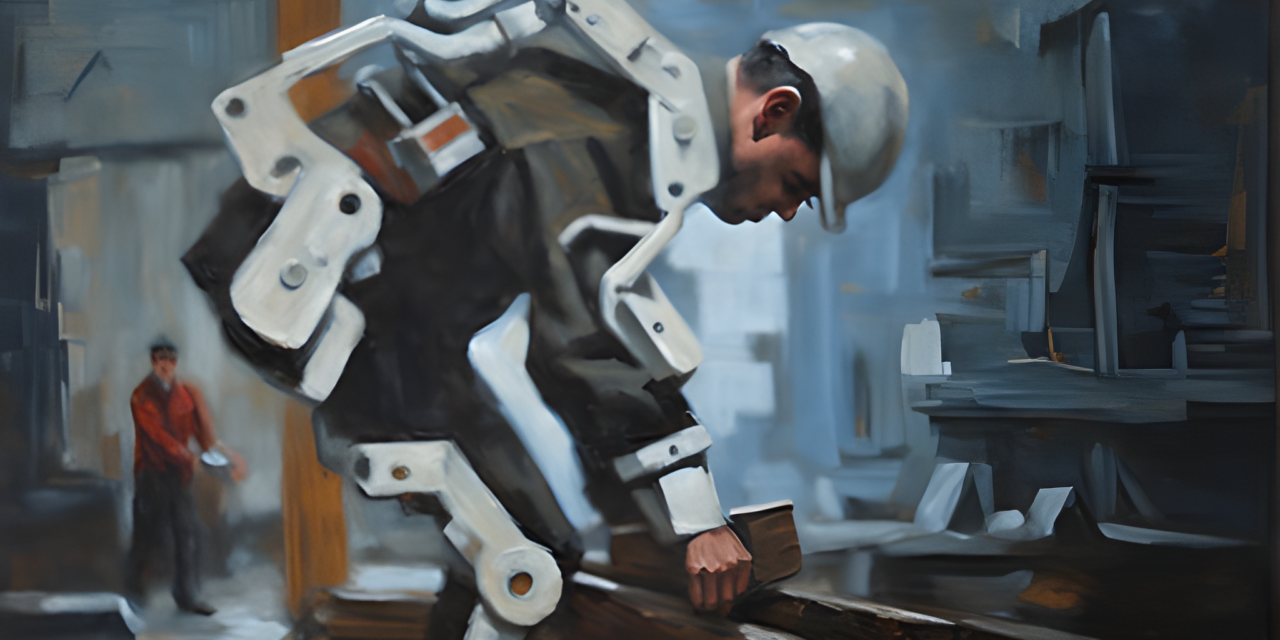A recent report by Allied Market Research predicts significant growth in the smart exoskeleton* market over the next decade. The market, valued at approximately $357.10 million in 2022, is forecasted to reach a staggering $1.7 billion by 2032, marking a compound annual growth rate (CAGR) of 17.3% from 2023 to 2032.
One of the driving factors for this growth is the increasing demand for rigid smart exoskeletons which offer superior performance. Manufacturers are focused on refining these exoskeletons, particularly enhancing their power, actuation systems, and control algorithms. This promises better strength augmentation and endurance support for wearers.
These technological advancements in smart exoskeletons not only augment human strength but also improve precision in physically demanding tasks. The benefits extend to lifting heavy objects, maintaining postures for longer durations, and efficiently executing repetitive tasks, all of which can lead to enhanced productivity and safety.
In healthcare, smart exoskeletons play a pivotal role in rehabilitation. They assist individuals recovering from injuries by providing critical support and aiding mobility. These devices can speed up the recovery process by analysing users’ movements and offering targeted assistance to help regain strength and proper movement patterns.
The smart exoskeleton industry has seen rapid innovation, focusing on producing compact, lightweight designs with advanced sensor technologies. These systems, worn externally, enhance human abilities, providing increased strength, endurance, and agility. There’s a noticeable shift towards designing exoskeletons for specific sectors such as healthcare, manufacturing, and logistics to cater to the distinct needs of each industry.
Artificial intelligence (AI) and machine learning (ML) integration in exoskeletons are emerging trends, enabling these devices to optimise their functions based on user movements and surrounding conditions. This adaptive capability offers personalised levels of assistance, foreseeing user intentions, and providing preemptive support.
Another trend to note is the development of specialised exoskeletons tailored for specific applications. Healthcare exoskeletons, for example, are being innovated for rehabilitation purposes. In contrast, manufacturing and logistics industries see designs that amplify physical capabilities and diminish injury risks for workers undertaking repetitive or strenuous activities.
Adding to their capabilities, smart exoskeletons are becoming more interconnected with the Internet of Things (IoT) platforms, which allows for real-time data collection, remote monitoring, and cloud analytics. Such integration enhances the overall usability of these devices.
The report’s key findings also suggest:
- The growth trajectory for the smart exoskeleton market remains positive, influenced by technological advancements and the shift towards sustainable practices.
- The Asia Pacific region dominates the market, buoyed by demand in sectors like packaging, building materials, and automotive, and being home to some of the major exoskeleton manufacturers.
- The marketplace is competitive, with companies prioritising innovation, strategic partnerships, and distribution network expansion to maintain a competitive edge.
Prominent players in the smart exoskeleton market include ReWalk Robotics Ltd., CYBERDYNE, INC., HONDA MOTOR CO., Ltd., Ekso Bionics Holdings, Inc., Bionik Laboratories, Lockheed Martin Corporation, Technaid Inc., ATOUN INC., and Sarcos Technology and Robotics Corporation, among others. Their strategies focus primarily on product development, acquisitions, collaborations, and business expansions.
Get the report and discover more here: https://www.alliedmarketresearch.com/smart-exoskeleton-market
Notes
* Rigid smart exoskeletons are wearable mechanical devices made of solid materials that fit on the human body to enhance, augment, or restore human performance. Unlike “soft” exoskeletons which use flexible materials and are more akin to wearable suits, rigid exoskeletons consist of hard components, usually metal or hard plastic, and often have joints that align with the wearer’s biological joints. Here’s what you should know about them:
- Structure and Material: Rigid smart exoskeletons are typically built from materials like metals, carbon fiber, or hard plastics. They provide a structured frame that offers physical support to the wearer.
- Applications: Rigid exoskeletons are used in various fields:
- Medical Rehabilitation: To aid patients recovering from injuries, surgeries, or conditions that affect mobility.
- Industrial and Construction: To assist workers in lifting heavy objects, reducing fatigue, and minimizing the risk of musculoskeletal injuries.
- Military: To help soldiers carry heavy loads, improve endurance, or provide added protection.
- Assistive Technology: To help individuals with mobility impairments move more freely.
- Mechanisms: Rigid exoskeletons might be powered (using motors or hydraulics) or passive (using springs or dampers). Powered exoskeletons can actively assist or resist motion, while passive ones generally support or enhance the user’s natural movements.
- Sensors and Controls: Being “smart”, these exoskeletons often incorporate sensors to detect the wearer’s movements, intentions, or external environment. Advanced control algorithms process this information to allow the exoskeleton to move in harmony with the user or provide specific assistance when needed.
- Benefits: The rigid structure provides a high level of support, making these exoskeletons particularly suitable for heavy-duty tasks or situations requiring significant physical augmentation or support.
- Challenges: Their rigid nature can sometimes make them heavier and potentially less comfortable than their soft counterparts. They might also require more maintenance given the complex mechanical components involved.
In essence, rigid smart exoskeletons represent a merging of robotics and wearable technology, providing enhanced physical capabilities and support to the wearer.






